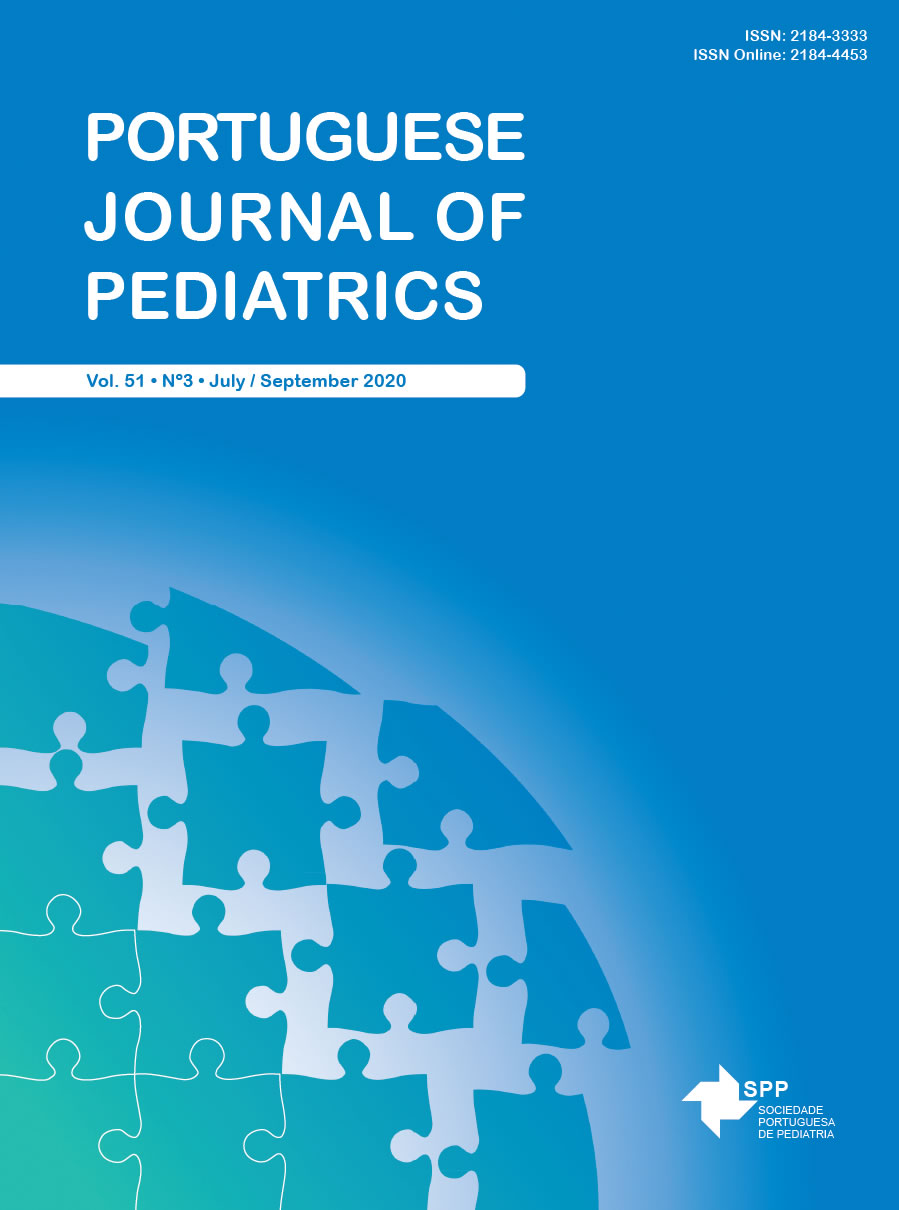Diamond-Blackfan Anemia: Case Series in a Portuguese Tertiary Level Hospital
Date of submission: 19-09-2019 | Date of acceptance: 24-02-2020 | Published: 01-07-2020
DOI:
https://doi.org/10.25754/pjp.2020.18600Abstract
Introduction: Diamond-Blackfan anemia (DBA) is a rare congenital erythroid aplasia associated with congenital abnormalities and evolving to bone marrow failure. It should be considered when the evolution differs from transient erythroblastopenia of childhood. Methods: Retrospective and descriptive study including the DBA cases followed in a Unit of Pediatric Hematology in a Portuguese tertiary level hospital, over 14 years (2006 to 2019). Results: Nine DBA cases were identified (56% female; 89% caucasians; 22% with congenital morphological abnormalities). The median diagnosis age was two months and the main symptoms were pallor (89%), failure and to thrive (55%). The median diagnosis hemoglobin was 3,7 g/dL [1,4;8,1] associated to severely low reticulocyte count. Bone marrow aspirate and biopsy was performed in 67% and in half there was severe erythroid hypoplasia. Sixty-seven percent had diagnosis confirmed by genetic testing and 56% were heterozygotic to mutation in RPS19 gene. The majority of the cases was transfusion dependent until corticotherapy was initiated (89%). There was secondary hemosiderosis in one patient. None had hematopoietic stem cell transplantation. There was remission in 22% and no deaths. Discussion: DBA is rare and the high diagnosis suspicion in the first year of life is essential. National and international registers, and extensive genetic testing, are crucial for new insights into the pathophysiology and management of DBA patients.
Downloads
Downloads
Published
Issue
Section
License

This work is licensed under a Creative Commons Attribution-NonCommercial-NoDerivatives 4.0 International License.









